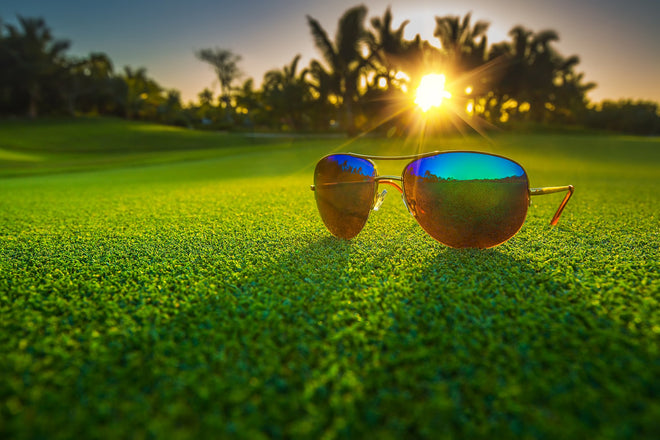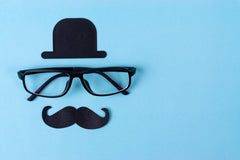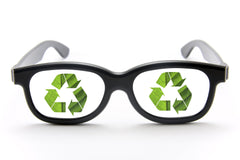Believe it or not, I see a lot of avid golfers daily. They are trying to find the proper eyewear that will make it easy for them to play golf and lower their score.
Everyone that plays golf quickly realizes it’s a visually demanding sport. Today, I’m going to talk about how to overcome the myriad of visual obstacles to perform better while keeping your eyes comfortable through eighteen holes of golf.
The Best Reading Glasses For Golfing
When it comes to finding eyeglasses to help you read while golfing, there are various choices, each with its pros and cons.
Single Vision Reading Glasses
Straight reading glasses will help you look at your score or see who’s calling or texting you on your phone, but they won’t help you improve your swing or watch the ball land on the green.
You couldn’t see the ball or line up your shot as you’re about to tee off. So, wearing reading glasses wouldn’t be such a good idea.
Bifocal Reading Glasses
Bifocals have two fields of vision: the top part of the lens for viewing objects at a distance and the "line" part for looking nearby. These work very well in daily life, but when playing golf, the reading part often interferes with addressing the ball as you’re about to hit. If you must wear bifocals, it’s best to buy ones with oversized frames that fit close to your face. That way, you can "look over" the reading part to see your ball during your setup.
Progressive Reading Glasses
Some of my patients ask me if progressive lenses are a good option when playing golf. It varies from person to person. Progressive lenses have many different powers from distance to intermediate to near, so you can potentially see all distances with one lens.
However, since the intermediate and reading portion of the lens is on the bottom, that would be the part you’d end up looking through when you keep your chin up to follow through your swing.
To avoid this problem, you could either tilt your glasses down your face (so you’re looking through the distance portion) or lower your chin to avoid looking at the reading part of your lens. All this while trying not to mess up your form.
And the Winner is…
All in all, the best thing to do is to have a dedicated pair of reading eyewear just to play golf, so your glasses don’t interfere with your game. No one pair of eyeglasses can do it all and cover life on and off the golf course equally well, especially if you’re serious about lowering your score.
What Are The Best Sunglasses For Golf?
I’m glad you asked…I’m going to admit that I’m about to "nerd" out on you right now. I find it fascinating how changing tints and coatings can change the way you see the world!
So, sit back as I try to explain the different options in detail…
Let’s start with what you need to see to play golf. You experience many visual conditions, such as changes in lighting, different backgrounds, varying contrast, and ever-changing environments.
To help you navigate these visual demands, different coatings and tints make it easier to see what you need to see to play the game more effectively. Here are some standard tints and coatings to think about:
- Gray – Gray tinted lenses are great for sunny days since they protect your eyes from glare while keeping good contrast with your surroundings, such as the green grass and blue sky.
- Brown – Brown-tinted lenses block blue light, especially on cloudy days, and help keep your eyes comfortable while making your vision feel sharper. It is a great lens to help preserve contrast with changing light situations.
- Amber – Helps to increase contrast as well as sharpen vision. Amber tints are great when following the ball as it lands on the green while keeping colors undistorted.
- Red – Red tints turn up the contrast so you can see the white ball on green grass. It also helps with contours so you can read breaks better when putting. However, it tends to distort colors.
- Photochromics – These are lenses that change from light to dark depending on how intense the sun and UV rays are. Photochromics are helpful since they automatically adjust as the light changes. So, they darken when you are playing during the day and lighten when the sun sets.
- Polarization – Polarized lenses are a must-have when playing golf during the day. It’s the best when it comes to blocking out glare, especially for blue, green, or light-eyed players. However, some golfers say it reduces contrast and depth perception.
Sunglasses are one of the best accessories when you’re serious about lowering your score. They help improve performance and accuracy by protecting your eyes from glare and UV, increasing depth perception, and maximizing color contrast.
When buying your next pair of sunglasses, it’s crucial to consider which lens to choose since each tint or coating you are putting on the lens has different properties that are more or less important to your golf game.
Final Thoughts
We’ve talked about eyeglasses, tints, and coatings that will protect your eyes and help your game. But the frame you choose is critical as well. Frames should be lightweight and wrap-around for better UV protection and fit snuggly on your face, so they don’t fall off or give you a headache after the ninth hole.
I’m confident that if you use the suggestions written above, you will have a more enjoyable time, lower your score, and generally elevate your golfing experience.





